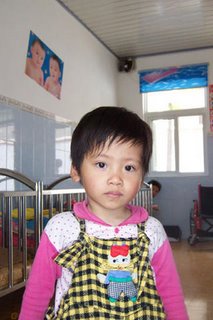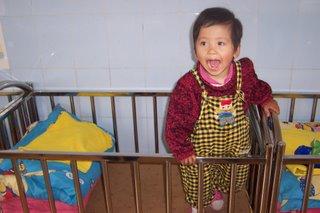
When my husband and I started our adoption journey almost 6 years ago, we didn’t do so out of any desire to become humanitarians ; we simply wanted children, and after exhausting all of the traditional means to do so, international adoption seemed like our surest route to parenthood. It was only after we got involved in our adoption process that we started to learn more.
After visiting China to be united with our children, and visiting the orphanages where our daughters first lived, we came away indelibly changed. We experienced not only the changes that come with the awesome responsibilities and joys of parenthood, but we did this with the painful awareness that, in bringing our children into our families, we left behind both their homeland and thousands of other children who may never know the love of a mother or father. The directors and caregivers in these institutions love and care for their charges to the best of their abilities, but they are challenged on a daily basis to “make do” with limited resources. As adoptive parents, we can’t forget the faces of the children we left behind.
Let me tell you about one such little girl that I personally met, and because of whom I have become involved in Love Without Boundaries.

This is the story of Jing. Jing was very ill when she was brought as an infant to her orphanage in southern China. At 15 months, Jing was not able to sit, to crawl, or even to roll over. She couldn't feed herself, couldn't really hold onto anything for more than a few seconds, and was almost like a newborn. Perhaps most disturbing, Jing made no eye contact, and almost no noise, at all; her primary activity seemed to be staring at her fingers, or repeatedly kicking her leg against the side of her crib. She was very thin; we suspected brain damage or autism. We were terribly fearful for her future.
After we got home from China, a fellow adoptive mother led me to Love Without Boundaries With the help of LWB, we were able to arrange to move Jing to an LWB foster care program. With two caregivers at her side, this one very small girl traveled to new city in a different province, to be placed into a private family experienced with special needs children, where she now experiences the care and love of a wonderful foster mother and father.

That was less than six months ago, and I can't tell you what a difference we can see in Jing, just in the photographs and the information that we receive on a monthly basis as her foster care sponsors. She has gone from a vacant-eyed child who didn’t interact with her surroundings, to a walking, running, clapping, smiling and laughing three year old, and we are hopeful she may become eligible for adoption in the future. Jing is now starting to try to form words by imitating her foster parents’ mouth movements. I view Jing’s progress as nothing short of miraculous given what we observed - and didn't observe – when we first met Jing. This would not have happened without foster care.

I’m proud to report that a little over a month ago, I joined LWB as a volunteer. In the weeks that have passed, I have been both thrilled to see the amount of daily activity in which the volunteers are involved, and also, at times, a little overwhelmed by the need, which – now that I am exposed to the names and faces – feels even more personal. In one recent medical report, I counted well over a hundred names of children needing surgery or other medical attention, many of them still awaiting sponsorship.
It would be easy to conclude that the need is simply too much for one person like me to make a difference. This is where LWB’s original mission comes into its sharpest focus for me: the belief that every child counts. A few weeks ago, Amy Eldridge shared something she had read in a book about Mother Theresa, and that quote has stayed with me: “Never worry about numbers. Help one person at a time, and always start with the person nearest you.”
We obviously can’t aspire to help every child in every orphanage, but each child that is helped has worth, and the possibility of a brighter future that we can now imagine.
